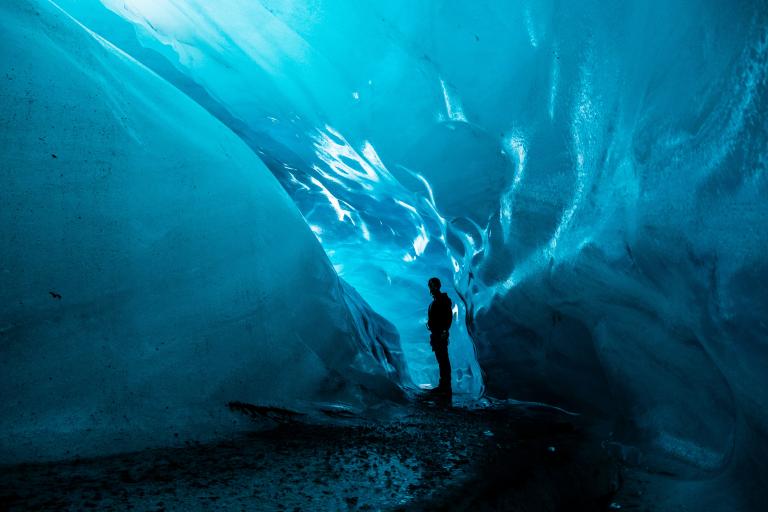Global Cryosphere Watch
GCW is the crosscutting activity area of WMO mandated to support Members in sustainably enhancing their capabilities for observing all components of the cryosphere, for accessing and utilizing the cryospheric data and for developing value-added analyses and indicators based on in-situ, space-based, and airborne observations of the cryosphere, as well as models, to meet defined information needs at the core of the WMO Strategic Plan, 2020-2023, and the WMO Water Ambitions.
The 73rd session of the WMO Executive Council (EC-73) approved the GCW pre-operational plan and the key deliverables of GCW cover:
- Cryosphere Observing Requirements: to support Earth system applications in the framework of the WMO Rolling Review of Requirements (RRR) process;
- Integration: Facilitate the increased use of cryospheric data for coupled assimilation (ocean cryosphere-atmosphere–land) in numerical weather prediction, operational analyses, climate reanalyses, and model verification, and a framework to assess the state of the cryosphere and its interactions within the Earth System;
- Standardization: in the framework of WIGOS, enhance the access to cryospheric observations and the quality of observational data by developing and making available observing standards and best practices for the measurement of cryospheric variables, and fostering their use by WMO Members;
- Improve exchange of, access to, and utilization of the cryosphere data and information products observations and products from WMO observing systems and those of its partners, as part of WIS. This includes near real-time access to available data and well documented climate records.
Mutually beneficial partnerships between scientists and practitioners and between operational and scientific communities underpinning the delivery of these goals and facilitate the increased access to information on the accelerated changes in the environment and supporting effective hydrometeorological and climate services.
GCW focus areas for 2020-2023

Sustaining cryospheric observations and data systems
Activities to sustain cryospheric observations
- WMO Technical Regulations (Manual on WIGOS and Guide to WIGOS) - Completion and publishing of regulatory and guidance material and enabling Members to plan, operate, and evolve their cryospheric observing systems (with a focus on observing requirements).
- GCW observing network - Fostering the registration of additional cryospheric observations in the WMO Observing Systems Capability Analysis and Review Tool - OSCAR/Surface, as operated by Members and partners. Applying the approved procedures for the allocation of WIGOS Station Identifiers (WSI) to GCW stations.
- WIGOS Data Quality Monitoring System (WDQMS) - to include the monitoring of registered cryospheric observations and establish one or more Regional WIGOS Centres (RWC) to fulfil the WDQMS role for cryospheric data and aligning GCW stations with these RWC.
Statement of Guidance
A priority of the pre-operational phase is the consolidation of requirements for cryospheric observations and related capabilities within the framework of the WMO Rolling Review of Requirements, the OSCAR Requirements, and the WIGOS 2040 vision. This will be a coordinated effort of Members and partners, building on the Cryosphere Theme Report of the Integrated Global Observing Strategy (2007), and will contribute to the results of the Joint Expert Team on Earth System Observing System Design and Experiments (JET-OSDE), specifically:
- Report on the consolidated cryosphere observing requirements and the assessment of capabilities
- Submit consolidated observing requirements for inclusion in the Manual on WIGOS
- Statement of Guidance on Cryosphere Observations.
Functional cryosphere "watch" capabilities
The “watch” activities are the interface with applications like numerical weather prediction (NWP), forecasts for ice navigation, hydrological forecasting, regional climate prediction (e.g. Regional Climate Centres and Regional Climate Outlook Forums) and monitoring (e.g. GCOS), hydrological status and outlooks (HydroSOS), and support the development of specialised products for mountain regions, etc. During this phase, the focus will be on:
- Strengthening the role of Snow Watch, including through the contribution to SnowPEx2 and to HydroSOS,
- Establishing a dedicated focus on Sea Ice, in consultation with the Marine Meteorology and Oceanography Standing Committee (SC-MMO) of the Services Commission (SERCOM), the Ocean Observations Physics and Climate Panel (OOPC), and others.
Pilot projects in support of capacity development
During the pre-operational phase, GCW will work with other structures of WMO to engage experts from NMHSs and other national institutions in projects addressing regional needs, e.g. knowledge transfer related to cryospheric observations and data use, including:
- Develop a checklist for regional projects as a framework for capturing relevant cryospheric information needs in project proposals
- Contribute to developing and implementing information on the cryosphere as part of the HydroSOS project, at the regional level
- Contribute and organize regional workshops, with the tentative schedule on Andes (2021), Caucasus region (2022), Central Asia and Regional Association IV (2023).
Related Links
Contacts
cryosphere wmo [dot] int (cryosphere[at]wmo[dot]int)
wmo [dot] int (cryosphere[at]wmo[dot]int)

